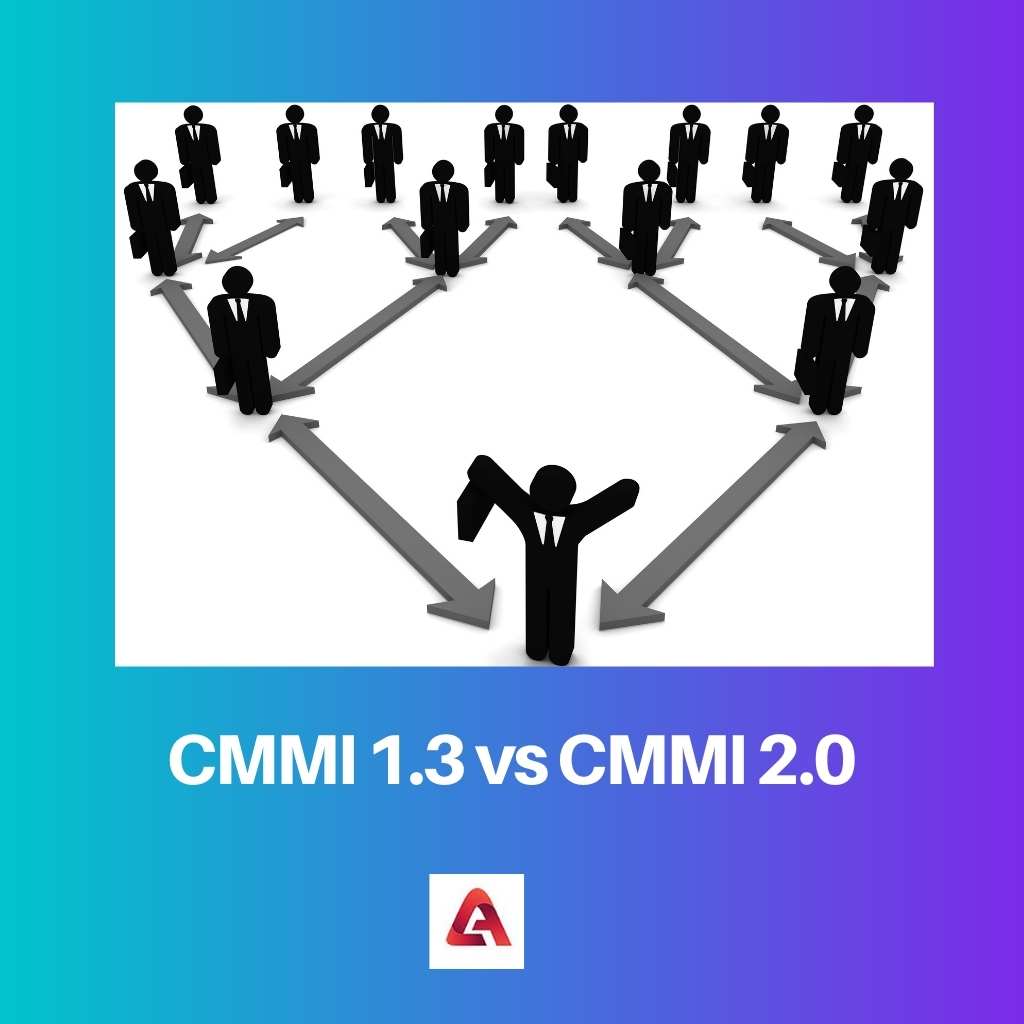Business organizations and institutions function on different guidelines and standards that are enforced by international associations and boards to maintain work integrity in the organizations, as well as to create an efficient work environment.
CMMI is a set of comprehensive guidelines that are used to increase efficiency in a work environment.
Key Takeaways
- CMMI 1.3 is an older version of the Capability Maturity Model Integration, a process improvement framework used in software engineering, while CMMI 2.0 is a newer version released in 2018.
- CMMI 2.0 is more streamlined and focused than CMMI 1.3, with fewer process areas and more emphasis on agile development practices.
- CMMI 2.0 is also more flexible and adaptable than CMMI 1.3, allowing organizations to tailor their process improvement efforts to their specific needs and goals.
CMMI 1.3 vs CMMI 2.0
CMMI 1.3 consists of 22 process areas organized into five maturity levels, while CMMI 2.0 consists of 16 core practices and four additional practice areas, organized into three capability levels. CMMI 2.0 also emphasizes greatly on agility and adaptability, unlike CMM1 1.3 model.

CMMI 1.3 was a comprehensive set of capability guidelines made by the CMMI Institute, and it was the standard model for businesses until September 2020.
The guidelines included product development and management models for management institutions to follow. The main focus of the model was on supply chain management and the development in the product manufacture and services sector.
CMMI 2.0 is the latest iteration of the CMMI model of guidelines and it is the successor to the CMMI 1.3 set of guidelines.
The guidelines focus on increasing the efficiency of the work environment and suggest different ideas for the management institutions to follow for maximizing efficiency.
Comparison Table
| Parameters of Comparison | CMMI 1.3 | CMMI 2.0 |
|---|---|---|
| Definition | CMMI 1.3 stands for Capability Maturity Model Integration 1.3. It is made by the CMMI institution | CMMI 2.0 is the successor to the CMMI 1.3 guidelines |
| Focus area | CMMI 1.3 focuses on increasing the capability of production and services | CMMI 2.0 focuses on maximizing the efficiency of both human resources and machine-based services |
| Improvements | CMMI 1.3 streamlines the production and services domain by making the processes go hand in hand | CMMI 2.0 maximizes efficiency by suggesting ideas for better management |
| Key points of interest | CMMI 1.3 has a key interest in production efficiency and services streamlining | CMMI 2.0 has a key interest in time, budget, and resource management |
| Scalability | CMMI 1.3 is not scalable | CMMI 2.0 is highly scalable |
What is CMMI 1.3?
CMMI 1.3 is a set of comprehensive guidelines introduced by the institute of CMMI as the standard model of operation for business organizations and other management institutions.
The model was used as the standard till September 2020, after which it was replaced by CMMI 2.0.CMMI stands for Capability Maturity Model Integration and it is a model derived to increase the efficiency of production and services-based work projects.
Thus, it is mainly implemented in production and services-based industries. As of 2021, almost all major industries abide by the CMMI guidelines.
The key areas of interest of CMMI 1.3 are increasing production efficiency and service quality. Thus CMMI 1.3 only focuses on projects directly related to manufacturing or other related processes.
This limits the usage of the guidelines, as industries engaged in other sectors cannot implement the CMMI guidelines into their system. Thus because of its limited scope, CMMI 1.3 is not very scalable as well.
Despite the drawbacks of limited scope and scalability, CMMI 1.3 is one of the most crucial guidelines for the proper functioning of manufacturing and other production practice-based industries.
When implemented properly, these guidelines help industries achieve better growth by increasing the efficiency of production.
What is CMMI 2.0?
CMMI 2.0 is the next iteration in the CMMI guidelines as well as the successor to the CMMI 1.3 guidelines. These guidelines are made by the CMMI Institute and the CMMI 2.0 has been used as the industry standard since the latter half of 2020.
Almost all manufacturing and services-based industries use these guidelines as the benchmark for their operations.
As CMMI 2.0 is the successor to the CMMI 1.3 guidelines, it is an upgraded and revised set of comprehensive guidelines, based on the original CMMI 1.3 draft. Thus many of its features are similar to the CMMI 1.3 guidelines.
A major upgrade that CMMI 2.0 has over CMMI 1.3 is that these guidelines are focused more on maximizing the efficiency of an organization, by implementing better management practices.
Thus more emphasis is given to human resource management, along with the management of time, and production resources. Budget management and proper allocation of cash are also the key areas of interest of CMMI 2.0 guidelines.
Because of the wider scope of these guidelines, CMMI 2.0 is highly scalable and can also be implemented in other industries apart from the industries involved in manufacturing and production.
Main Differences Between CMMI 1.3 and CMMI 2.0
- CMMI 1.3 stands for Capability Maturity Model Integration 1.3. It is made by the CMMI institution. CMMI 2.0 is the successor to the CMMI 1.3 guidelines
- CMMI 1.3 focuses on increasing the capability of production and services. CMMI 2.0 focuses on maximizing the efficiency of both human resources and machine-based services
- CMMI 1.3 streamlines the production and services domain by making the processes go hand in hand. CMMI 2.0 maximizes efficiency by suggesting ideas for better management
- CMMI 1.3 has a key interest in production efficiency and services streamlining. CMMI 2.0 has a key interest in time, budget, and resource management
- CMMI 1.3 is not scalable. CMMI 2.0 is highly scalable
- ftp://ftp.sei.cmu.edu/public/documents/02.reports/pdf/02tr028.pdf
- https://books.google.co.in/books?hl=en&lr=&id=N-wA3MQjfIQC&oi=fnd&pg=PR9&dq=CMMI&ots=DSxOPOYH8V&sig=mQ-4NiGbDhNlroyx-G1pSc4ZTm8
